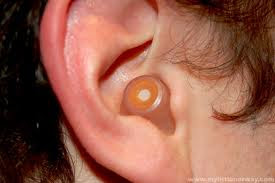
1. The mucilaginous cough
often occurs in acute bronchitis in a cold or flu, usually as a result of infection by viruses or bacteria. Added to often get complaints such as colds, fevers or sore throats. The disease usually begins with neck pain after a day of it will be a painful, dry cough. After 2-3 days, then comes to a strong mucus production. The increased mucus forced to cough and throat clearing, a natural reaction of the body, because the secretion is not to accumulate in the respiratory tract. If the disease is not cured properly, or there are continuous infections, the cough can become chronic (chronic bronchitis).
Common causes
Cold or flu with acute bronchitis.
2. The dry cough
is a very different response to noxious stimuli, such as Smoke, dust, gases or chemical vapors. A typical example is the smoker's cough. The cough is hard, painful and without expectoration. Cough can be very annoying, especially if it leads to regular coughing fits, make the person concerned to create the particular night. From a cough that lasts long, it can also create a chronic bronchitis.
Common causes
* Smoking!
* Working with dust (for example, flour).
* Allergic asthma (asthma, allergy).
* As a side effect of some drugs (e.g. ACE inhibitors).
* Severe respiratory diseases (e.g. tuberculosis, bronchial cancer).
What can you do.
1. In congested cough.
* Help secre-solving measures. The cough reflex should not be suppressed with medication, because the dissolved secretions must be coughed up, yes.
* Drink plenty, about 2-4 liters a day, preferably cough and Bronchialtees to promote mucus solution.
* Keep warm, but not sweat. Heat on the breast stimulates the circulation and thus the mucus solution.
* Cough syrups, drops or tablets, for example take with ambroxol or acetylcysteine or plant extracts such as plantain, coltsfoot and thyme acting expectorant.
* Chest and back rub with cold balm. It contains essential oils (eg eucalyptus, thyme) act expectorant, antibacterial and antispasmodic.
* To swallow capsules taken with essential oils (see action above).
* Steam baths or inhalations (e.g., chamomile and essential oils) to moisten the airways and to exploit the effect of the ingredients, for example, anti-inflammatory effects of chamomile.
2. In dry cough.
* Nagging cough may be attenuated with drugs, since no large amounts of secretions are produced.
* When coughing breastfeeding, especially during the night to help tablets, suppositories, drops or juices such as with dextromethorphan. The effect is inhibition of the cough reflex, so this is referred to as a cough preparations blockers.
* Even herbal substances have hustenblockierend, e.g. Juices or suppositories with ivy extract.
* Lozenges or candy with ingredients from mucus-rich plants such as okra or Iceland moss also dampen the urge to cough through the mucous membrane covering with a protective layer.
* Cough drops with essential oils, menthol, anise, eucalyptus, fennel, sage, etc. they also act as disinfectant and anti-spasmodic, the cough by moistening the throat relief.
* In general: combinations of mucolytic and antitussive nursing measures are more appropriate as it is not because of the dissolved mucus blocking the cough reflex can be coughed up.
When you need a doctor.
* If the symptoms get worse or do not improve (no later than 14 days).
* When added difficulty breathing and / or high fever, it is suspected pneumonia.
* If suspected whooping cough.
* In case of suspected chronic bronchitis or asthma.
* If the discharge is bloody.
* If pregnant women, infants, young children or elderly people are affected by a stronger cough.
What your doctor can do.
* Determine the cause of cough and prescribe the appropriate medication. Eventually antibiotics are necessary.
* For very distressing cough, the doctor may prescribe drugs with codeine.
Prevention.
* Keep yourself from ill persons.
* No smoking.
* Ensure adequate moisture.
* Other measures (see cold and flu).





















